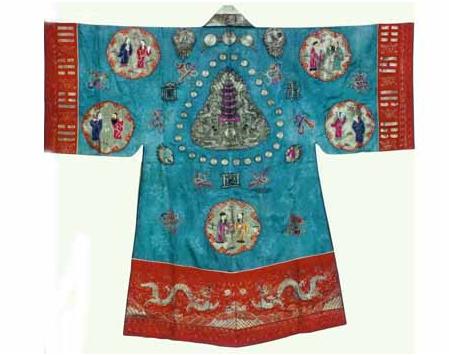
Patterns are a special language and a branch of cultural categories. Profound ideological connotations are contained in the composition of patterns. Different patterns emerged as a result of differences in country, ethnic group and aesthetic taste. The traditional Chinese embroidery patterns were fostered on the specific foundation of Chinese culture, with its appearance and inheritance deeply affected by many factors in Chinese society, including politics, economy, religion, philosophy and folk customs. Among them, the decorative patterns in accordance with the traditional Chinese patriarch system and ideas are especially included into the system of rites, becoming a criterion to judge one’s social status.
Ever since the Zhou Dynasty, Mian Fu, the ceremonial robe for imperial officials consisting of a black upper part and ginger skirt, became a must on sacrificial occasions for the imperial court. The major means to distinguish the rank of nobility of the courtiers is to judge the ornaments on their garments. According to rites of Zhou, twelve ornaments are used on the garments, while the lower the official hierarchy is, the less ornaments will be used. In the Ming and Qing Dynasties, ceremonial robes embroidered with different patterns were used to differentiate the official ranks, with civilians bearing bird patterns and military officer animal patterns. Among all traditional Chinese ornamental patterns, dragon is the noblest one reserved for the emperors, which is also regarded as the symbol of majesty.
As a carrier of national culture, the decorative patterns are inevitably under the influences of religions, which are mainly represented in three aspects: nature worship, totemism and genital worship.





